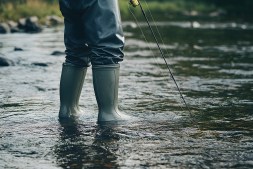Solo Hiking Confidence: Top Strategies to Ensure Your Safety Outdoors

Hiking alone can be an exhilarating experience, offering you the freedom to explore nature at your own pace. However, it’s essential to prioritize safety while enjoying the great outdoors. In this article, we’ll discuss top strategies for solo hiking that will boost your confidence and ensure your safety.
Plan Your Route
Before setting out on a hike, carefully plan your route. Research trails that match your skill level and physical condition. Make sure you know how long the hike will take and be aware of any potential hazards along the way. Consider using mapping apps or printouts to keep track of paths and landmarks, ensuring you’re not wandering off course.
Communicate Your Plans
It’s crucial to inform someone about your hiking plans before you head out alone. Share details about where you’re going, expected return times, and any emergency contacts. This way, if anything goes wrong or if you encounter difficulties along the trail, someone will know where to start looking for you.
Pack Essential Gear
Having the right gear is vital for a safe solo hiking experience. Carry a well-stocked backpack that includes essentials such as water, snacks, a first-aid kit, a map and compass (or GPS), a multi-tool or knife, flashlight with extra batteries, and weather-appropriate clothing. Also consider carrying a whistle or bear spray in areas where wildlife encounters are possible.
Stay Aware of Your Surroundings
While it’s easy to get lost in thought while hiking alone — especially when enjoying scenic views — staying alert is key to ensuring safety. Regularly check in with yourself; listen for sounds around you and observe changes in weather conditions or trail markers. Being vigilant can help you avoid potential dangers like getting lost or encountering wildlife unexpectedly.
Trust Your Instincts
Finally, always trust your instincts when it comes to solo hiking. If something doesn’t feel right — whether it’s an area that looks unsafe or feeling uncomfortable with another hiker’s presence — don’t hesitate to turn back or alter your route as needed. Prioritizing your intuition can help keep you safe during outdoor adventures.
By following these tips for solo hiking safely and confidently—planning ahead, communicating with others, packing essentials properly, staying aware of surroundings, and trusting your instincts—you can enjoy nature’s beauty while minimizing risks associated with solo adventures outdoors.
This text was generated using a large language model, and select text has been reviewed and moderated for purposes such as readability.











